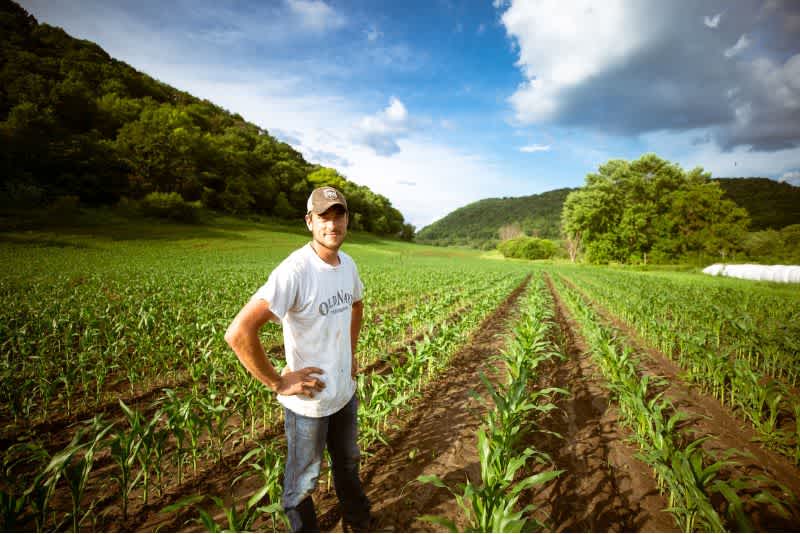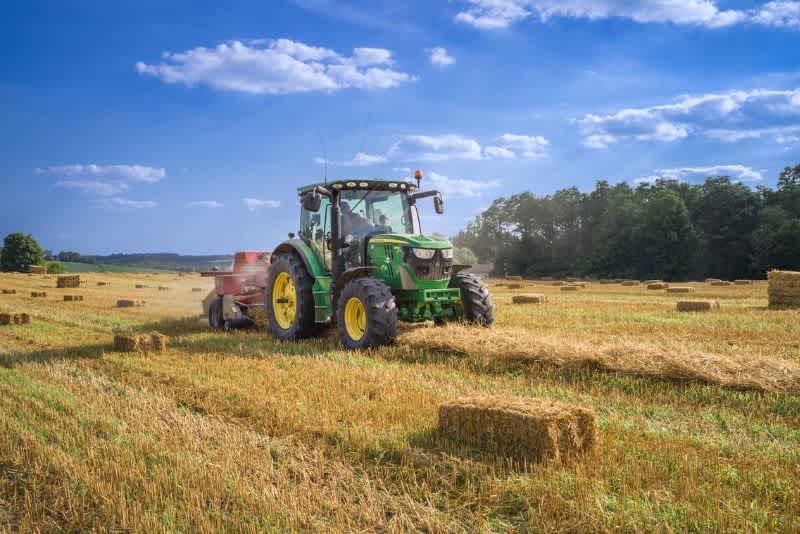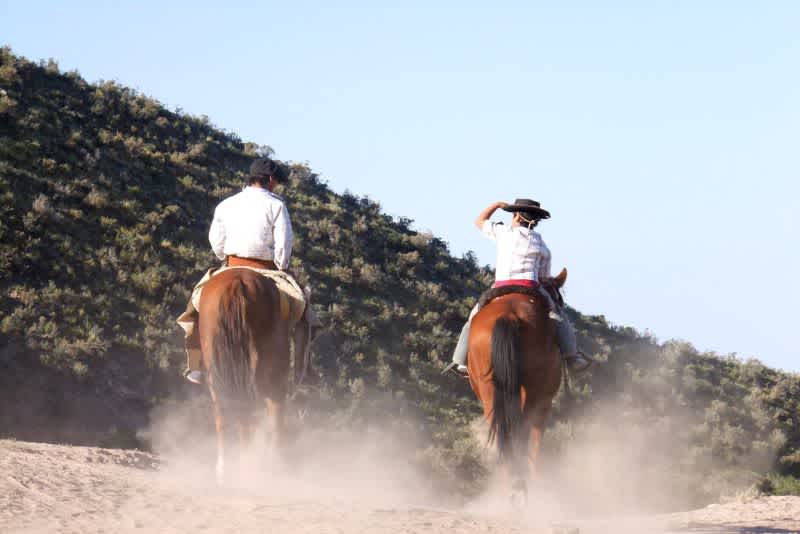Different Types of Ranches: From Cattle to Game Ranching
Published: March 15, 2023

Keep track of all your cattle with the #1 Cattle Management Software
Try out Ranchr today for free
For centuries, mankind has explored the wild frontiers of the world, creating a relationship with nature that is both rewarding and beneficial. Ranching, an activity that dates back to the 16th century, is a way of life that involves working with animals and land in order to produce economic goods.
From game ranches to family farms and guest dude ranches, there are many different types of ranching, each providing its own unique experience.
Let's take a closer look at the various types of ranches and how they shape our understanding of nature and economics.
What are Ranches
Ranching involves working with the land and taking care of animals in order to produce food and other economic goods. It's important to understand how ranches work in order to create a more sustainable relationship between humans and nature.
Ranches are typically large pieces of land used for raising livestock such as cows, pigs, sheep, goats, and horses. Ranchers also breed these animals in order to sell them or use them for their own consumption. In addition to these activities, ranching can also involve harvesting crops like hay, grains, and vegetables.
Ranching has evolved into a variety of different forms including livestock ranching and guest dude ranches where visitors can experience horseback riding and other activities on a working ranch. Let’s explore the different types.
Types of Ranches

Ranches come in many different shapes and sizes, each with its own unique set of activities that take place on the land. Here are some of the most common types of ranches:
Game Ranches
Game ranches are typically private operations where the wildlife is bred and mainly hunted for recreational purposes.
As contrasted with cattle ranches, game ranches focus primarily on recreational hunting and commercial sale of game.
Wildlife management measures may involve controlled supplemental feedings, seasonal hunting regulations, and accurate population surveys.
Game ranch operations can also provide vital conservation services such as habitat preservation and the relocating of animals to preserve endangered species or balance conflicting interests between agriculture and wild populations.
Livestock Ranching

Livestock ranches are farms devoted to raising animals such as cattle, sheep, goats, chickens, and horses. Livestock production is the focus of these ranches, with a secondary focus on wool, dairy, poultry, or meat products.
They are often large operations including many acres of land and thousands of animals. Ranches also come in various sizes; some may be less than 100 acres but still contain livestock while others may cover thousands of acres.
The main goal of a ranch is to increase the size or quality of its animals’ stock, often relying heavily on animal selection and breeding to do so.
Other daily operations include protecting animals from predators, providing feed and water, managing the herd’s health, and performing any necessary repair work for barns or fencing. Additionally, some ranchers will sell hay or other goods for profit.
Cattle Ranch
A cattle ranch is a large agricultural enterprise devoted to the production of beef, dairy, and veal, primarily through the breeding and rearing of cattle.
Cattle are raised for their meat and hides, but also for other byproducts such as milk and leather. Most ranches are highly diversified, with several species of livestock that are rotated for pasture and/or feed-fed. Ranching can require significant investment in infrastructure, land ownership, and equipment but can also offer ways to diversify a farming operation or establish an income-generating source separate from crops.
Selective breeding programs, feed supplements, and purposeful healthcare play a vital role in the success of any ranching business.
Goat Ranch

A goat ranch is a type of livestock operation that specializes in the raising, breeding, and care of goats for profit.
Goats are multi-purpose animals and provide a source of meat, milk, cheese, mohair, and hide products. Additionally, they have a reputation for being hardy and able to thrive in areas where other livestock may struggle.
In fact, their low-maintenance needs make them ideal for beginner farmers and small operations who are looking to venture into animal husbandry without taking on too much risk or expense.
Goat ranching can be particularly successful when properly executed as goats can reproduce up to three times per year with each pregnancy producing multiple kids at once.
Regardless of the breed or purpose they serve, quality care and husbandry practices should always be a top priority to ensure healthy livestock and optimal production yields.
Sheep Ranch
Sheep ranching is a commercial agricultural activity that involves the raising of sheep on large tracts of land for their wool and meat.
Ranchers must have a good understanding of animal husbandry and breeding as well as land management and conservation to be successful.
They must also maintain fences, pastures, feeding stations, and other necessary structures. Sheep may be corralled or moved from pasture to pasture, often with the aid of herding dogs.
A successful sheep farm needs to balance economic viability with sustainability; ranchers are responsible for soil conservation, fencing regulations, disease control, and more.
Family Farms

A family farm is an agricultural property managed by a family, where both labor and ownership are typically shared between generations. Family farms are usually small-scale operations and account for the majority of land used for farming worldwide.
Although they tend to specialize in single crops or livestock, some also produce a range of other food items such as fruits, vegetables, dairy products, and eggs. Family farms can face financial difficulties due to their small size and limited resources.
Due to their socio-economic importance and cultural significance, family farms have been traditionally supported by government agencies in many countries.
They serve as important centers for local food production, preservation of traditional agriculture methods, ecosystem conservation, biodiversity maintenance, and protection of rural development and cultural heritage.
Guest and Dude Ranches

Dude ranches are iconic American experiences. Famous for horseback riding, western activities, and a laidback lodge atmosphere.
Cowboys show tourists the way of the wild west by guiding them on trail rides, demonstrating wilderness skills, and teaching traditional roping techniques.
The dude ranch lifestyle can cater to everyone through unique activities that suit all skill levels and interests: fishing in remote mountain ponds, target shooting at ranges, paintball battles in fields, hiking on trails through wooded hillsides, exploring canyons or sneaking out solo on silent rides through untamed terrain - all while discovering natural wonders, wild animals, and stargazing under moonlit skies.
Dude ranches offer an unforgettable experience providing the chance to get back to nature and enjoy recreational fun set amid stunning landscapes for all ages year-round; a perfect blend of modern luxury meets wild west tradition.
Conclusion
Ranching has had a significant impact on human history, offering sustainable economic opportunities while fostering a deep connection with nature.
As we have seen, there are various types of ranching, each with its own set of goals and practices.
Understanding these different types of ranching can help us appreciate the complex relationship between humans, animals, and the environment, and how they contribute to the broader economy.
Keep track of all your cattle with the #1 Cattle Management Software
Try out Ranchr today for free